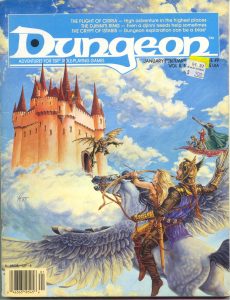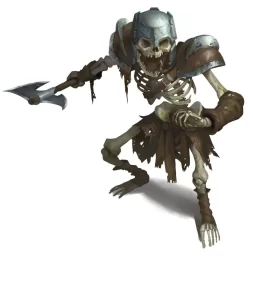
New Player
Are you a new player seeking a starter set of rules, but overwhelmed? Want to learn the basic rules in a matter of minutes?
This is your guide that will get you up and playing confidently in a matter of minutes, but new players, please don't be intimidated: you only need to know less than 1% of the guidelines and very little about the world you will venture, while a great Dungeon Master may only know 20% of the guidelines and the world you are adventuring.
From 244+ races to hundreds of spells, with thousands of published creatures, demons, monsters and foes, including their habitat to their societies, from Psionics to Feats, from thousands of magical items, relics, potions, scrolls, artifacts, armor, etc. to 278+ Options and Features, from Racial Traits to Conditions - the Dungeon Master labors endlessly for you, so don't stress, trust.
Starter Set for D&D
This starter set of rules goes fast, so hold on, and you'll be an old-pro, else seasoned player, in several minutes. Though we won't cover all aspects of the game (i.e. Psionics, Mounted Combat, coinage exchange rates, etc.), you will learn these naturally when you either play, or are curiously compelled to read more about the game guidelines.
This starter set was designed to be read in the order it is presented on this page to help you quickly understand the D&D game much easier.
Get the PDF
Or get the PDF for free, instead: How to Play Dungeons and Dragons: A Quick Guide
D&D Virtual Dictionary Index
Buckle up, fledgling heroes, because you're about to get a crash course in the spellbinding lingo of Dungeons & Dragons! Forget the confusion, ditch the doubt, and toss out that intimidation-this is your fast track to gaming fluency. With the terms and definitions laid out below, you won't just dip your toes into this enthralling universe; you'll plunge headlong into it, brimming with the kind of unshakable confidence that'd make even a Paladin blush!
Trust us, knowing these core terms isn't just useful; it's like having the secret map to a treasure hoard of role-playing riches. You'll go from newbie to native speaker faster than a rogue can pick a lock, unlocking the game's full depth, excitement, and endless possibilities.
So, grab your virtual dictionaries and arm yourselves with knowledge! With these foundational terms under your belt, you're not just a participant-you're an empowered adventurer, poised to conquer whatever challenges come your way! Prepare to dive into the game as if you've been slaying dragons and disarming traps for ages. Get ready to play D&D like a seasoned pro, bursting with the kind of audacious swagger that legends are made of. Game on!
| Quick Topics Covered | ||
|---|---|---|
| Dictionary | Modifiers and Bonuses | Spell Defense |
| Spell Attack | Attacking | Damage Roll |
| Initiative | Round | Bonus Action |
| Ability Modifiers | Proficiency Bonuses | Alignments |
| Skills | Skill Bonuses | Proficiency |
| Skill Checks |
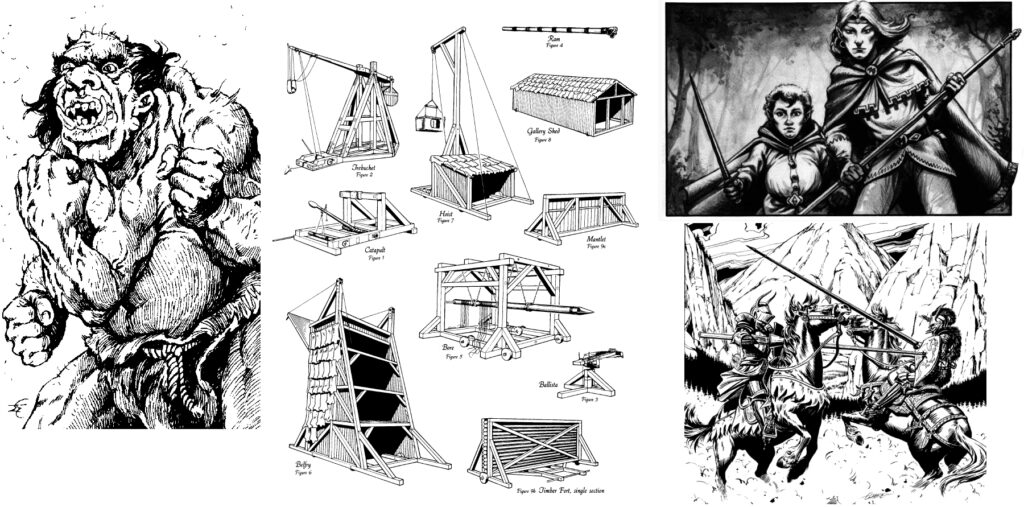
Dictionary
DM: Dungeon Master - the referee/narrator of the adventure and/or creator of the adventure.
ROUND: in combat or quick situations, the game uses 6-second spans of time called a round. During this round, everyone or thing involved gets a "turn"
TURN: a character, monster, etc. gets to choose and resolve an action.
ACTION: when taking an action on your turn, you describe your action to the DM (and other players) i.e. attack, cast a spell, etc.
1D20: a one 20 sided die.
ATTACK ROLL: roll a 1d20, rolling equal to or higher than the targets Armor Class (AC) to make a successful attack.
ADVANTAGE ROLL: roll 2 20 sided dice (2d20) and choose the highest rolled dice.
DISADVANTAGE ROLL: roll 2 20 sided dice (2d20) and choose the lowest rolled dice.
ARMOR CLASS (AC): combined ability and armor that the Attack Roll must be equal to or higher for a successful attack. Armor Class (AC) is determined by different factors like dexterity, armor character is wearing, etc. Armor Class (AC) is the ability not to be affected by an attack.
HIT POINTS: (HP): your life points. Should your HP go to zero, your character has died (DM decides if 0 HP is death, or determines if you lose -1 HP per round until you are -10 HP before death sets in).
DAMAGE ROLL: "roll for damage" is called out when you successfully make an attack roll. The type of dice used for damage is relative to type of attack or weapon used.
ABILITY: Strength, Dexterity (agility), Constitution (health), Intelligence, Wisdom and Charisma - these attributes are what defines your character's perception, strength, endurance, memory, etc.
SKILL CHECKS: a 1d20 roll against a particular action that is assigned a Difficulty Class (the DC is determined by the conditions that the game guidelines suggests or by the DM).
NPC: non-playing character: a character the DM plays either for story or encounter.
DIFFICULTY CLASS (DC): how hard it is to do something (i.e. dodge a spell, climbing up a tree, etc.) determined by the conditions that the game guidelines suggests or by the DM.
CHALLENGE RATING (CR): is the monster challenge rating (difficulty) to kill it. It's only a general guide for the DM when creating encounters. For example, if it were a party of 4 1st level characters that came across a single Death Dog that has a CR 1, it would be, in theory, it would be a challenge for them.
Or 4 characters who are all 2nd level, a monster with a CR 2 rating would be a challenging encounter for that party.
But if the Challenge Rating is too high or too low for a particular party, then it might be too hard or too easy of a challenge.
SAVING THROW (save throw): an attempt to resist a spell, a trap, a poison, a disease, or a similar threat. You don't normally decide to make a saving throw - you are forced to make one because your character or monster is at risk of harm. Saving Throw is used with a 1d20, you must roll equal to or over the DC provided by conditions DM states, or Spell Defense on the next page: Spell save DC.
CLASS: your character's profession - your character's calling.
DARKVISION: is not infrared or thermal vision, but a low-light vision that give you an ability to see shadows in complete darkness, yet bright lights in dim light.
Modifiers and Bonuses
Though the summary is presented now, the following will explain in detail all of this.
Modifiers and Bonuses are numbers subtracted or added to your roll (i.e. attack roll, saving throws, skill checks, etc.).
Ability Modifiers (Attributes: STR, DEX, WIS, etc.)
Proficiency Bonuses (character's level bonus e.g. a bonus for being a particular level)
Skill Bonuses (Ability Modifiers + Proficiency Bonus), you would see a "P" or a dot "•" next to the skill(s) i.e. history, investigation, persuasion, etc.
Spell Defense
Spell save DC rolls equal to or above the DC (Difficulty Class) using a 1d20 when saving against spell effects, or trying to overcome, else detect a spell effect. This Spell save DC is for anyone, you or the monster, trying to dodge a spell effect.
How To Calculate Spell save DC you must overcome = 8 + the Proficiency Bonus+ the Ability Modifier
Each spells' description will inform you if it's a Spell Attack, Spell save DC, etc. and more.
With some spells there are no Spell Saving Throws (Spell save DC), just the spell caster rolling a Spell Attack.
Spell Attack
When attacking with spells, roll 1d20 with Spell Attack Modifier ---> your Proficiency Bonus + your Ability Modifier.
If you roll equal to or over the target(s) AC (Armor Class) after rolling your 1d20 + Spell Attack Modifiers, you hit and your spell takes full effect.
Attack
When attacking with an item (i.e. sword, dagger, or a thrown object like a spear, dagger, an arrow, etc.) you roll a 1d20 against the target's AC (Armor Class).
Rolling equal to or greater than the targets AC (Armor Class), you hit. And will roll for damage.
Attack Roll: 1d20 + Ability Modify + Proficiency Bonus, rolling equal to or above target's AC (Armor Class)
Damage Roll
Damage roll is a "roll for damage" and is called out when you successfully make an attack roll. The type of dice used for damage is relative to type of attack or weapon used (e.g. a dagger does 1d4 damage, while a short sword does 1d6 damage). Ability Modifiers can apply to damages.
Note About Damage Rolls and Spell Damage:
When applying bonuses to Damage Roll do NOT add Proficiency Bonus or Skill Bonuses.
The only exception is if you have a class feature, or a feature obtained from some other source, that makes it so.
While the bonus can be added to attacks, saves, and ability skill checks, it cannot be added to damage or healing throws. A character's proficiency in a skill only increases in their odds of succeeding in the attempt. It does not add to the damage done in an attack or to the amount of HP restored when healing.
Also, per the spells' description, a spell tells you which dice to roll for damage and whether to add any modifiers.
Initiative
"Roll for initiative" is the moment when the order of turns in combat is decided, called the "initiative order"; it will decide who goes first, second, etc. allowing each to declare their action for their turn. This is decided by a 1d20 + Dexterity Ability Modifier.
During the combat, this initiative stay in this order round after round until encounter is over.
Round
Generally a round is defined as a turn of actions for all in a combat encounter: every single character and monster(s) get an action, and once done, that is 1 round completed.
Bonus Action
Is an extra action on your turn, when spell or special ability or feature of the game allows it (i.e. another attack, another spell cast, etc.).
Ability Modifiers
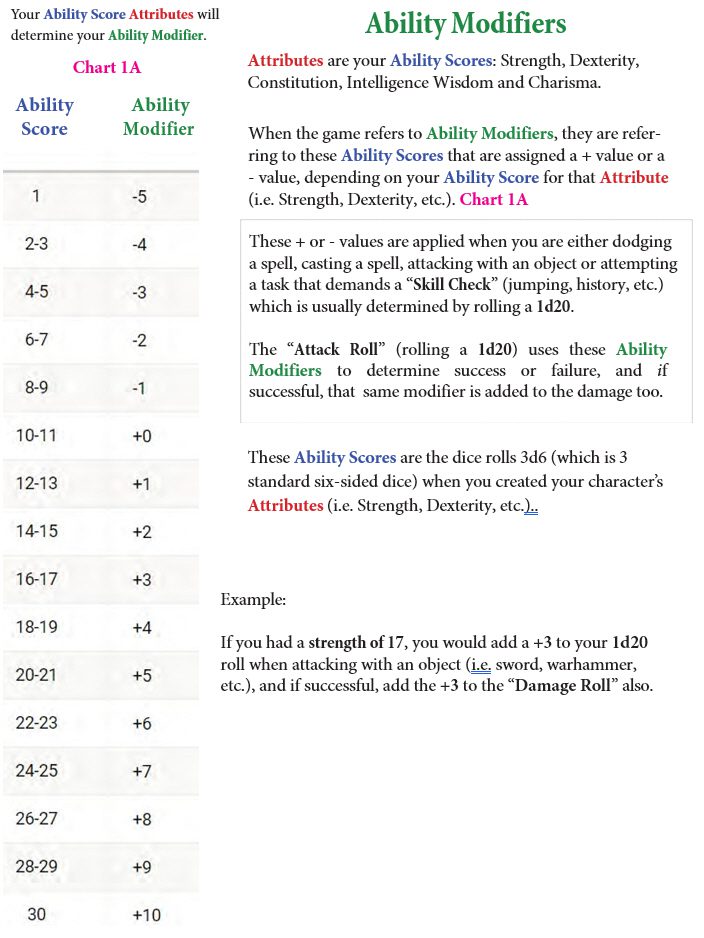
Proficiency Bonuses

Alignments
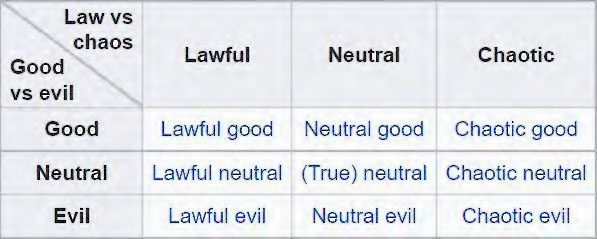
Though it looks intimidating, alignments are very simple.
The top row of Lawful, Neutral, Chaotic is in how the character sees laws that govern a society.
The left column of Good, Neutral, Evil is how the characters believes about individuals towards others in society, their compassion, or lack of, for others.
Characters alignments are always top row then left column.
If someone says they are "Lawful Good" it means they believe in laws the govern the lands (Lawful) and the second part, "Good" means it's their duty, to society, to do good for others (Good).
If someone states they are "Chaotic Good" it means they do not believe in any laws in any society (Chaotic), the second part, "Good" means it's their duty, to society, to do good for others (Good).
There are comprehensive examinations of these alignments, but that is the gist of it.
Everything in D&D is measured called out in feet. Feet is used to measure distances. Though 10 feet or 60 feet might not sound that far, here are some examples to put those feet into perspective.
Twenty feet across rooms, so could imagine what it might look like in a dungeon, cavern, castle, etc.

Yet, here is an example of sixty feet outdoors. Could you imagine what sixty feet would look like in a dungeon?

Skills
"Skills" can be a bit intimidating at first, but you'll learn that it's really easy.
The list of skills only shows your bonus modifiers, used when you perform a task.
Skill Bonus
Skill Bonuses (Ability Modifiers + Proficiency Bonus), you would see a "P" or a dot "•" next to the skill(s) i.e. history, investigation, persuasion, etc.
You get a couple of proficiency skills with the character class you create, and with those skills you add your Proficiency Bonus for your level to those particular skills you are proficient in.
For example, looking at the Players Handbook for Rogues, you see a section titled "Proficiencies" regarding this class. It will list Armor (types you can wear without penalty), Weapons you can use (without penalty), Tools you are proficient in, Saving Throws, and a list of your Skills you can choose from to be proficient in (to gain Proficiency Bonus for your character's level).

"Skill Checks"
Are called by DM when you need to beat a Difficulty Class (DC) regarding a task, remembering that DC is relative to the attempt at a particular task, rolling equal to or over that DC using a 1d20 roll + Skill Bonuses ( + Proficiency in that skill).
Want to recall a detail of an object you are looking at, that is a "History" skill check. The DC will be up to the DM, but you would use your History skill (adding or subtracting bonus) to your 1d20 roll - rolling equal to or higher than the DC value DM assigned to the task.
Want to investigate a potential secret door at the end of the passage? That's an "Investigation" skill check.
Want to run and jump off a rooftop to another rooftop? "Acrobatics" skill check. Want to sneak out the back door? That's a "Stealth" skills check.
That's it in a nutshell. Any questions or comments, please email me through contact form. And remember to support my writing, this website that has every D&D 5e content digitally archived, including digital dice.
For Patreon support click here:






